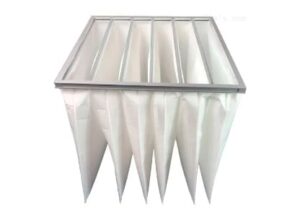Air intake screens serve as a crucial barrier against airborne debris, safeguarding equipment and enhancing operational efficiency. By filtering out contaminants before they infiltrate vital systems, these screens mitigate costly repairs and prolong the lifespan of machinery. This article delves into the mechanics, applications, and benefits of air intake screens, emphasizing their role in improving performance and reducing maintenance costs.
The Mechanism Behind Air Intake Screens
Advanced Filtration Technology
Air intake screens, also referred to as air inlet filters, employ an engineered mesh composed of polyester and polypropylene. The unique properties of these materials create an electrostatic charge that captures airborne debris effectively. This static charge, generated by air movement, attracts particles without allowing them to escape back into the environment. The screens can be easily cleaned using methods such as vacuuming, brushing, or rinsing, thus maintaining their filtration efficiency.
| Material Composition | Charge Type | Effectiveness |
|---|---|---|
| Polyester | Negative | Attracts debris |
| Polypropylene | Positive | Stabilizes structure |
Versatile Applications
Air intake screens are designed for adaptability, making them suitable for a variety of equipment types, including:
- Dry Air Coolers
- Air-Cooled Chillers
- Air Handling Units
- Condensers
- Cooling Towers
- Intake Louvres
These screens can be customized to fit any shape or size, accommodating circular fans, triangular vents, and more.

Benefits of Installing Air Intake Screens
Operational Advantages
Implementing air intake screens can significantly enhance equipment performance. By filtering out materials such as leaves, pollen, and fine particulate matter, screens prevent these contaminants from entering critical systems. This proactive measure not only improves efficiency but also reduces the energy consumption of machinery. Studies indicate that the integration of air intake screens can lead to energy savings exceeding 30%.
Maintenance Cost Reduction
Regular maintenance of equipment can be labor-intensive and costly, particularly when dealing with fouled coils or cooling tower packing. Air intake screens simplify maintenance by providing a protective layer that can be easily cleaned. This approach minimizes downtime and protects delicate components from damage. Furthermore, the ability to clean screens in situ eliminates the need for extensive repairs, thereby reducing overall maintenance costs.
Enhanced Hygiene and Equipment Longevity
Contaminated coils and heat exchangers can become breeding grounds for bacteria. Air intake screens prevent dirt accumulation, improving hygiene and extending the lifespan of disposable filters by up to 75%. This prolongation means less frequent replacements and lower operational costs. Additionally, by reducing the workload on motors and fans, air intake screens contribute to longer-lasting equipment and a better return on investment.

Cleaning and Maintenance Solutions
Simplified Cleaning Processes
Air intake screens are designed for ease of cleaning. Depending on the type of mesh installed, many screens can be cleaned without removal, using simple methods such as:
- Hosing Down
- Vacuuming
- Brushing
- Natural Rainfall
In some cases, three-dimensional mesh screens may require removal for more thorough cleaning.
Fixing Options for Air Intake Screens
Choosing the right fixing method for air intake screens is essential for optimal performance and ease of maintenance. Various options include:
- Grommet Fixings: Ideal for securing screens with nylon fittings.
- Velcro Fasteners: Perfect for installations that do not require frequent removal.
- Magnetic Attachments: Provide easy installation and removal for lightweight screens.
- Metal Frames: Offer edge protection and enhance durability.
Table of Fixing Options
| Fixing Method | Description | Best Use Case |
|---|---|---|
| Grommet | Stainless steel/brass washers for secure fitting | General applications |
| Velcro | Self-adhesive strips for quick installation | Areas with low maintenance needs |
| Magnetic | Sewn or riveted strips for easy installation | Lightweight screens |
| Metal Frame | Provides protection and supports various fixing types | Heavy-duty applications |
Conclusion: Invest in Air Intake Screens Today
Investing in air intake screens not only protects your equipment but also contributes to energy savings and reduced operational costs. If you are considering implementing air intake screens for your mechanical systems, please reach out to discuss your specific needs. Enhance your equipment’s performance and longevity with this simple yet effective solution.






